QUESTION 1 A table thats used to create a view is called a w
QUESTION 1
A table that’s used to create a view is called a what?
base
OFFSET
temporary
view
1 points
QUESTION 2
A view
doesn’t store any data itself
consists only of the rows and columns specified in its CREATE VIEW statement
is like a virtual table
all of the above
1 points
QUESTION 3
A view is a/an ________________ statement that’s stored as an object in the database.
SELECT
INSERT
DELETE
UPDATE
1 points
QUESTION 4
By default,
columns in a view are given the same names as the columns in the base tables
calculated columns do not need to be named in the SELECT statement
columns from different tables with the same name do not have to be renamed
all of the above
1 points
QUESTION 5
Each of the following is a benefit provided by using views except for one. Which one?
You can create custom views to accommodate different needs.
You can create a view that simplifies data insertion by hiding a complex INSERT statement within the view.
You can simplify data retrieval by hiding multiple join conditions.
You can provide secure access to data by creating views that provide access only to certain columns or rows.
1 points
QUESTION 6
In the View Designer, you can
specify the selection criteria and sort order for a view
display the results of a view
all of the above
edit the design of an existing view
1 points
QUESTION 7
The SELECT statement for a view
can include the INTO keyword
cannot use the ORDER BY clause with the OFFSET and FETCH clauses
can use the ORDER BY clause if it also uses the TOP clause
can’t use an ORDER BY clause
1 points
QUESTION 8
To delete an existing view, you use which statement?
ALTER VIEW
CREATE VIEW
DELETE VIEW
DROP VIEW
1 points
QUESTION 9
To modify an existing view, you use which statement?
ALTER VIEW
WITH SCHEMABINDING
CREATE VIEW
UPDATE
1 points
QUESTION 10
The statement
CREATE VIEW Example3
AS
SELECT *
FROM Invoices;
will create an updatable view
will create a view through which you can delete rows, but not insert or update rows
will create a read-only view
d. will fail because the * operator isn’t allowed
1
A series of SQL statements that you can store in a file is called a
script
catalog view
subquery
view
1 points
QUESTION 2
Code a statement that assigns the value “Test” to a scalar variable named @Name that’s declared with the varchar data type.
DECLARE ‘Test’ @varchar;
DECLARE varchar @Name = ‘Test’;
SET @Name = ‘Test’;
SET Test @Name;
1 points
QUESTION 3
Code a statement that changes the database context to a database named TestDB.
USE TestDB;
none of the above
GO TestDB;
EXEC TestDB;
1 points
QUESTION 4
Code a statement that creates a table variable named @TestTable.
CREATE @TestTable;
SET @TestTable = table;
DECLARE @table TestTable;
DECLARE @TestTable table;
1 points
QUESTION 5
Code a statement that tests whether the database named TestDB exists.
IF DB_ID (\'TestDB\') EXISTS
IF TestDB IS NOT NULL
IF DB_ID (\'TestDB\') IS NOT NULL
IF TestDB EXISTS
1 points
QUESTION 6
Code example 14-1
USE AP;
DECLARE @Date1 smalldatetime;
DECLARE @Date2 smalldatetime;
SELECT @Date1 = MIN(InvoiceDueDate), @Date2 = MAX(InvoiceDueDate)
FROM Invoices
WHERE InvoiceTotal - PaymentTotal - CreditTotal > 0;
IF @Date1 < GETDATE()
IF @Date2 < GETDATE()
BEGIN
PRINT \'Earliest past due date: \' + CONVERT(varchar, @Date1, 1);
PRINT \'Latest past due date: \' + CONVERT(varchar, @Date2, 1);
END;
ELSE
PRINT \'Earliest past due date: \' + CONVERT(varchar, @Date1, 1);
ELSE
PRINT \'No invoices past due\';
(Refer to code example 14-1.) If the current date is 04/04/16, the earliest invoice due date for invoices with unpaid balances is 02/09/16, and the latest invoice due date for invoices with unpaid balances is 03/20/16, what will be printed by this script?
Earliest past due date: 02/09/16
Latest past due date: 03/20/16
Earliest past due date: 02/09/16
Nothing
No invoices past due
1 points
QUESTION 7
Given the following statements that declare a local variable and set its value, which of the following will cause an error?
DECLARE @Example1 varchar(128);
SET @Example1 = \'Invoices\';
SELECT *
FROM @Example1;
SELECT *
FROM sys.tables
WHERE name = @Example1;
PRINT \'Table name is: \' + @Example1;
IF @Example1 = \'Invoices\'
SELECT * FROM Invoices;
1 points
QUESTION 8
The scope of a derived table is limited to what?
the batch in which it’s defined
the script in which it’s defined
the statement in which it’s defined
the database session in which it’s defined
1 points
QUESTION 9
The scope of a local variable is limited to what?
the statement in which it’s defined
the batch in which it’s defined
the script in which it’s defined
the database session in which it’s defined
1 points
QUESTION 10
The scope of a temporary table is limited to what?
the script in which it’s defined
the batch in which it’s defined
the statement in which it’s defined
the database session in which it’s defined
1 points
QUESTION 11
What do you call a local variable that can store a single value?
scalar
single-local
temporary
global
1 points
QUESTION 12
What statement can you use to divide a script into multiple batches?
EXEC
DECLARE
GO
SET
1 points
QUESTION 13
What statement do you use to execute a dynamic SQL statement?
CONTINUE
EXEC
GO
SET
1 points
QUESTION 14
Which of the following statements can be coded in a batch with other statements?
CREATE FUNCTION
CREATE TABLE
CREATE PROCEDURE
CREATE VIEW
1 points
QUESTION 15
Which statement can you use to control the flow of execution based on a true/false condition?
IF...ELSE
TRY...CATCH
BEGIN...END
EXEC
d. will fail because the * operator isn’t allowed
| a. | base | |
| b. | OFFSET | |
| c. | temporary | |
| d. | view |
Solution
1. A table that’s used to create a view is called a what?
Base table. So, the answer is: a. base.
2. A view
-> doesn’t store any data itself
-> consists only of the rows and columns specified in its CREATE VIEW statement
-> is like a virtual table
So, the answer is: d. all the above.
3. A view is a/an ________________ statement that’s stored as an object in the database.
a. SELECT statement.
4. By default,
-> columns in a view are given the same names as the columns in the base tables
-> calculated columns do not need to be named in the SELECT statement
-> columns from different tables with the same name do not have to be renamed
So, the answer is d. all the above.
5. Each of the following is a benefit provided by using views except for one. Which one?
b. You can create a view that simplifies data insertion by hiding a complex INSERT statement within the view.
6. In the View Designer, you can
-> specify the selection criteria and sort order for a view
-> display the results of a view
-> edit the design of an existing view
So, the answer is, c. all the above.
7. The SELECT statement for a view
8. To delete an existing view, you use which statement?
d. DROP VIEW is the statement which drops the view. Remember this is a DDL statement.
9. To modify an existing view, you use which statement?
c. CREATE VIEW is the one which is used to modify the existing view. Infact, we should use it as CREATE OR REPLACE.
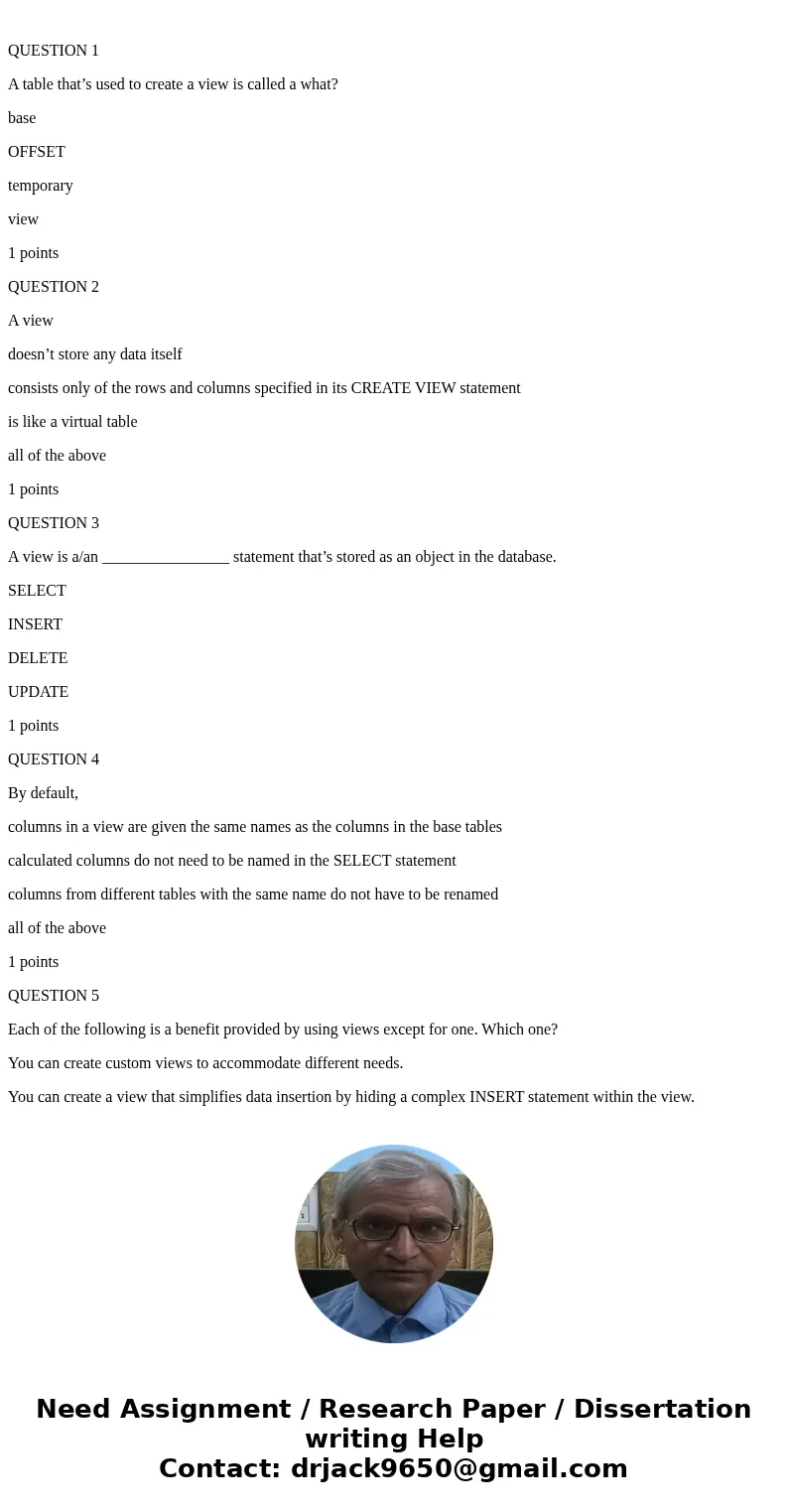
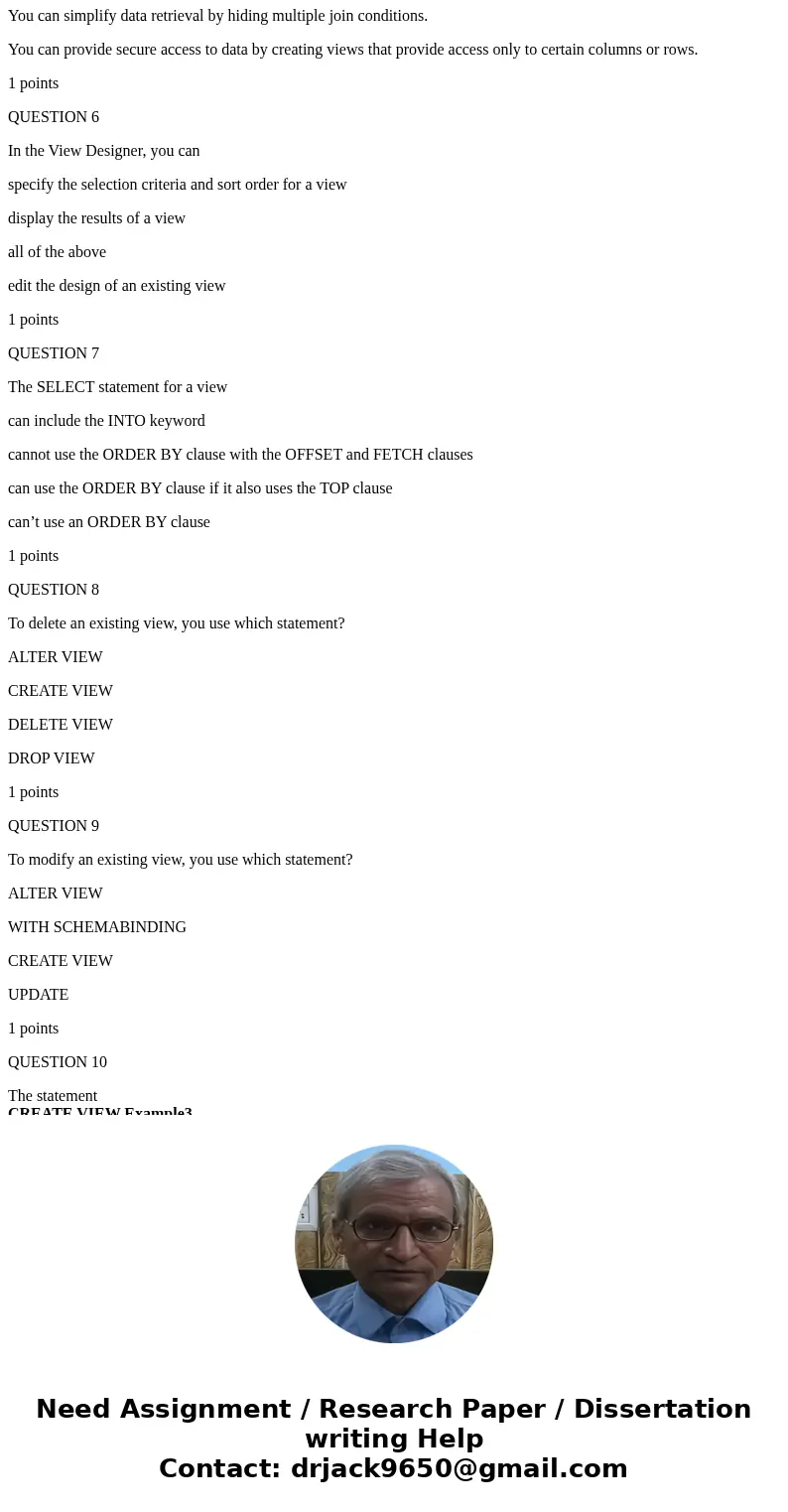
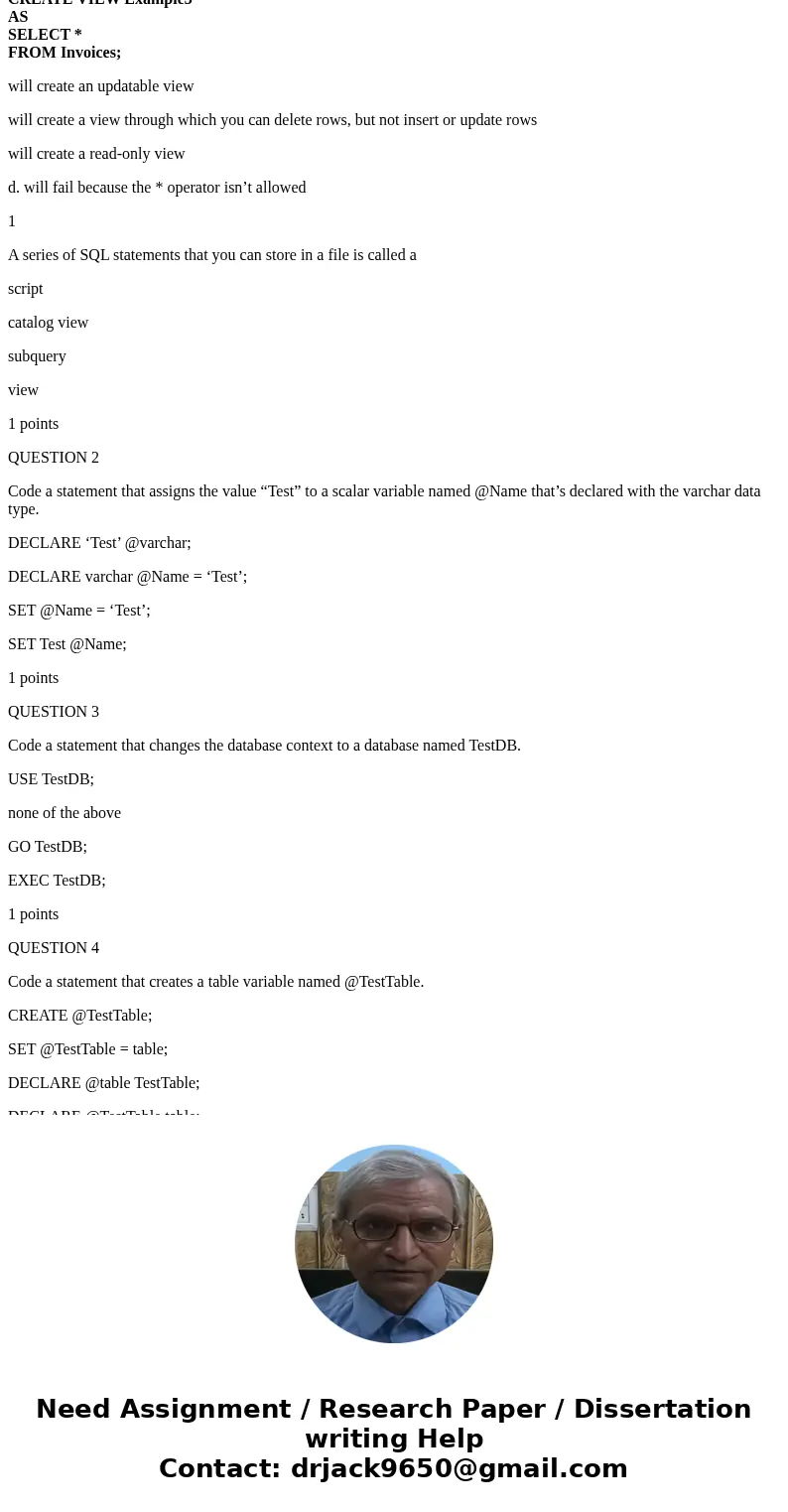
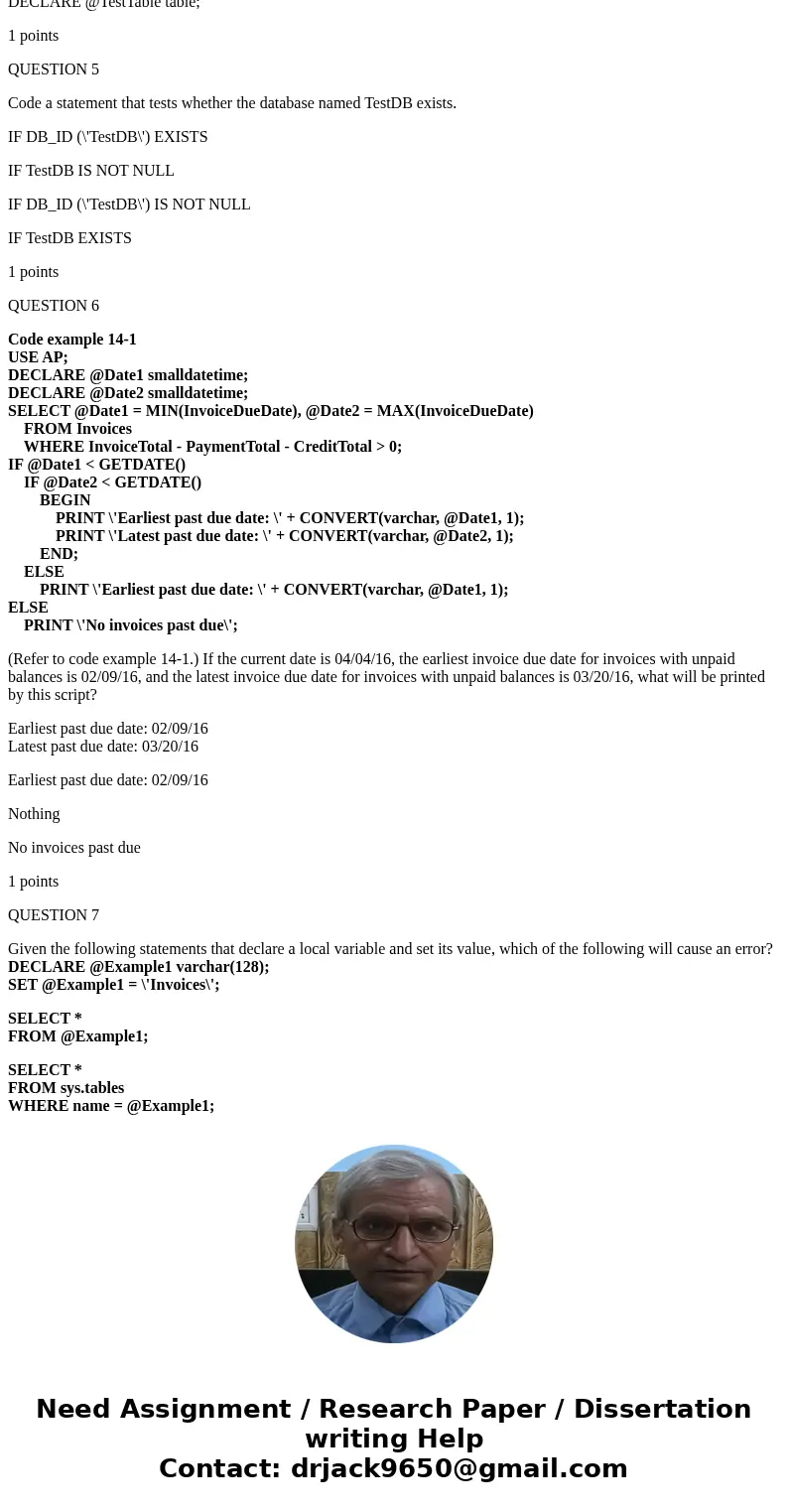
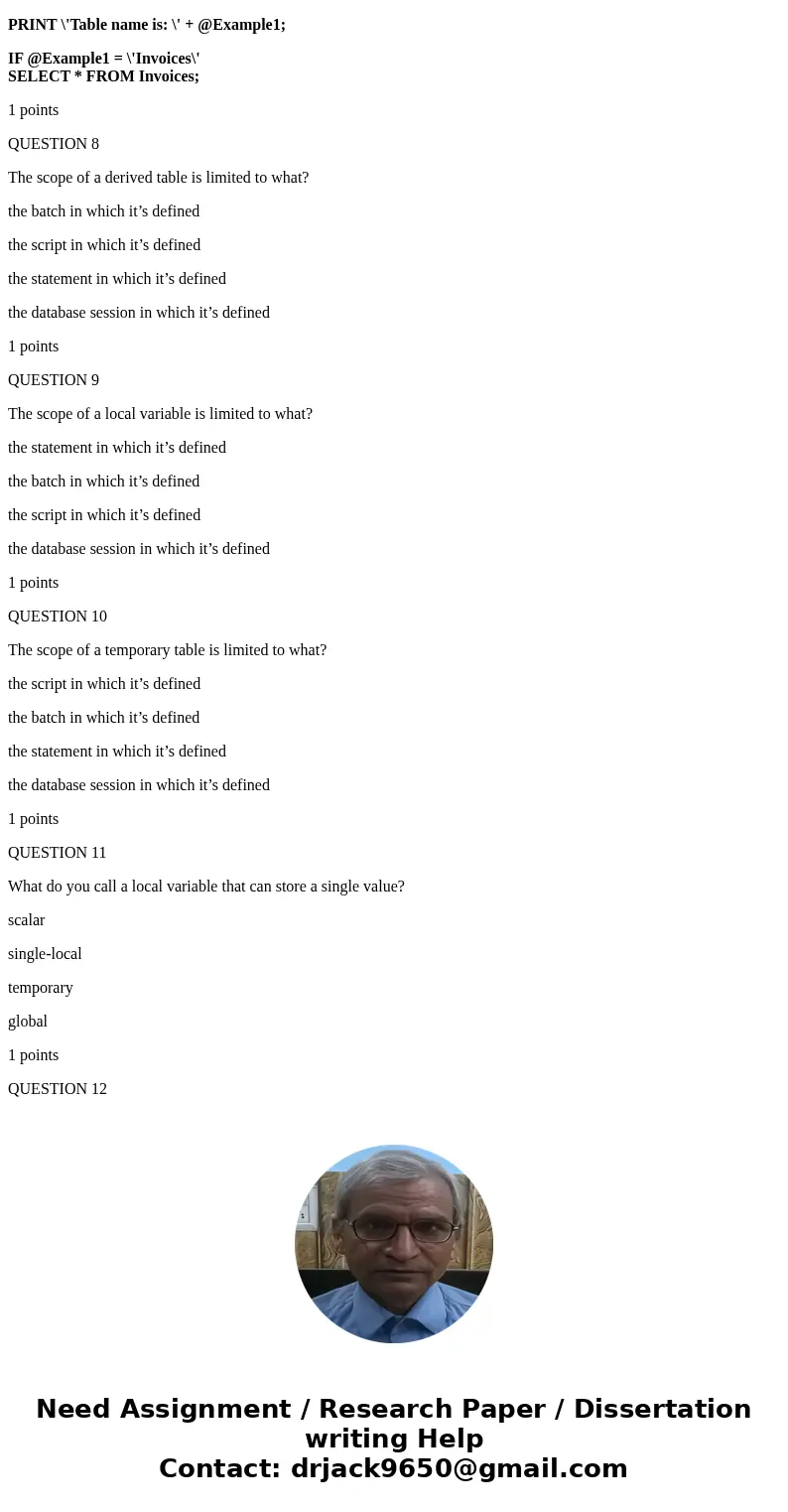
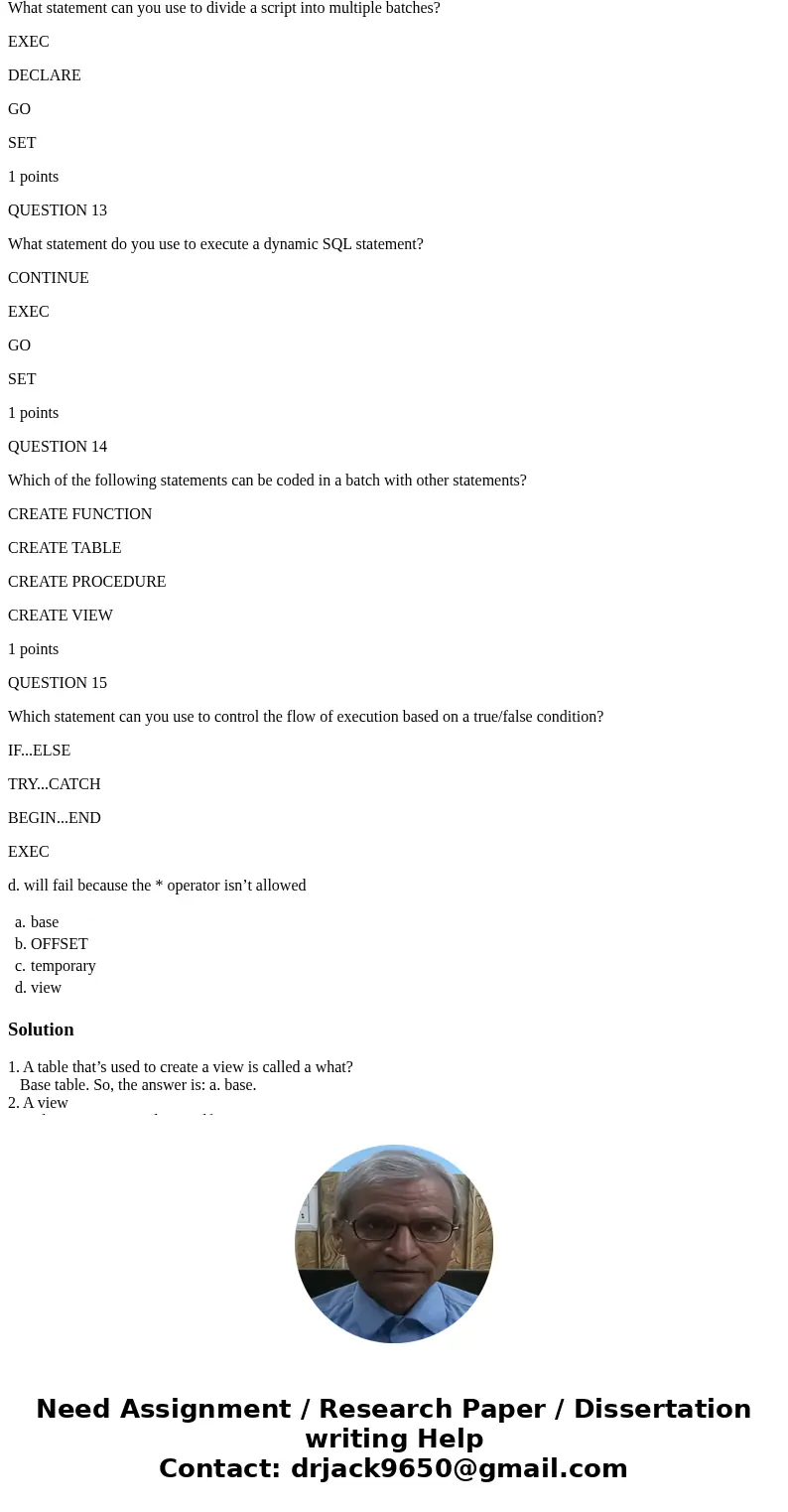
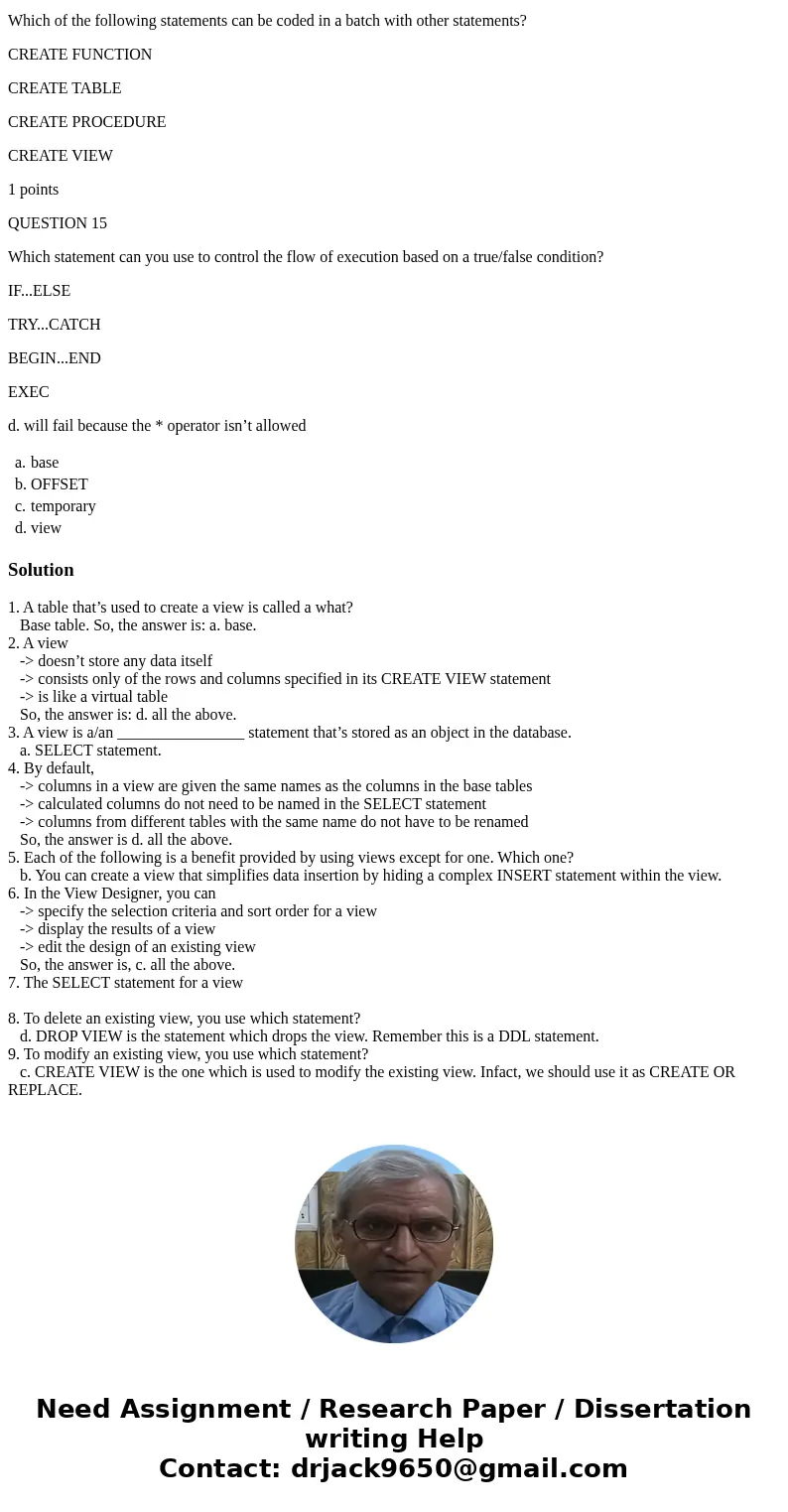
 Homework Sourse
Homework Sourse